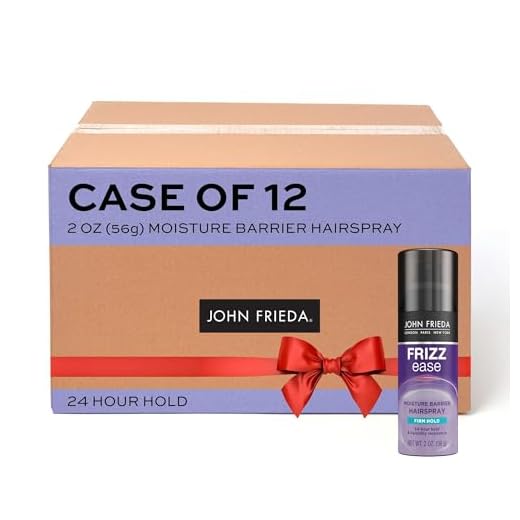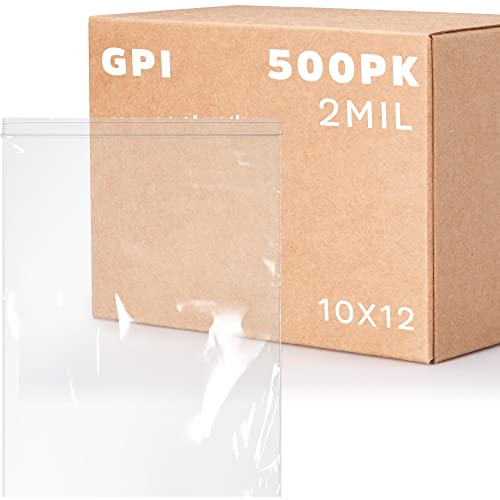


TSA and most security checkpoints follow the 3-1-1 rule: individual bottles must not exceed 100 ml / 3.4 fl oz, all bottles together must fit in one clear 1‑quart (≈1 L) resealable bag, and each passenger is limited to one such bag. Items larger than 100 ml are normally refused at the checkpoint for in‑cabin carriage and should be moved to checked baggage or left behind.
Pressurised styling products are classified as dangerous goods because they are under pressure and often flammable; airlines and national aviation authorities impose additional limits. Many carriers permit larger containers in checked stowage but impose per‑passenger quantity caps or outright bans on flammable sprays. Verify the airline’s hazardous‑materials or baggage policy before departure to avoid confiscation or fines.
Practical packing steps: place the nozzle protector or cap on, put each container in a zip‑top plastic bag, tape the actuator if loose, and place the sealed quart bag at the top of your hand baggage for inspection. Keep products in original packaging when possible and retain receipts for value proof if requested. If a product exceeds cabin allowances, move it to checked stowage only after confirming the carrier’s permitted limits.
For international travel, apply both origin and destination rules: EU/UK and US checkpoints align on the 100 ml cabin limit but enforcement and airline policies vary by country. Check the departure airport security page and the airline’s hazardous‑materials guidance at least 24 hours before flying to prevent surprises at the gate.
Bringing pressurised styling spray in cabin baggage: rules
Allow containers no larger than 100 ml (3.4 fl oz) in your cabin bag; place all such containers into a single transparent resealable plastic bag with a maximum volume of 1 litre (quart) – one bag per passenger.
Security screening limits and practical steps
Place each travel-size spray can upright inside the clear bag and seal it before security screening. If the nozzle is removable, fit the cap to prevent accidental discharge. Present the clear bag separately at the security checkpoint when requested.
If a can exceeds 100 ml, move it to checked baggage only after confirming the airline’s dangerous-goods rules or buy a travel-size at your destination. Replace pressurised styling product with a non-pressurised pump bottle (refillable) to avoid restrictions entirely.
Do not pack damaged, dented, rusted or leaking pressurised cans anywhere in your baggage; damaged containers are frequently refused. If security personnel request inspection, comply and declare the product type and quantity.
| Item | Allowed in cabin? | Packing requirement | Practical tip |
|---|---|---|---|
| Pressurised styling spray ≤100 ml (3.4 fl oz) | Yes | Single 1 L clear resealable bag; one bag per passenger | Use original cap; place inside a zip-lock to contain spills |
| Pressurised styling spray >100 ml | Typically no (in cabin) | Check airline for allowance in checked bags; follow dangerous-goods limits | Buy at destination or transfer to travel-size pump |
| Non-pressurised pump-style styling product | Yes (subject to same 100 ml limit) | Same 1 L clear bag rule applies | Best alternative to avoid hazardous-goods issues |
Before you fly
Verify the departure airport and carrier screening page for any deviations from the standard 100 ml/1 L rule and for country-specific prohibitions. When in doubt, switch to travel-size pump dispensers or pack larger cans in checked baggage only after confirming airline and national regulations.
TSA and DOT rules: container sizes, quantity limits and labeling for pressurized sprays in cabin baggage
Store pressurized personal spray products in containers of 3.4 fl oz (100 ml) or less and place them inside one quart‑sized (≈0.95 L) clear resealable bag for inspection.
TSA screening rule: liquids, gels and pressurized sprays brought into the cabin must follow the 3‑1‑1 rule – each container ≤3.4 fl oz (100 ml), all containers fit in a single quart bag per passenger; present the bag separately at the checkpoint. Items larger than 3.4 fl oz are not permitted in the cabin and should be checked or discarded.
DOT (Hazardous Materials Regulations) for checked baggage: most consumer pressurized spray products are allowed in checked baggage with limits – individual container capacity generally must not exceed 18 fl oz (≈500 ml) and the total aggregate per person must not exceed 70 fl oz (≈2 kg). Flammable formulations or products labeled as hazardous may face stricter limits or be prohibited altogether; airlines may impose additional restrictions.
Labeling and packaging requirements: keep products in the original container with intact manufacturer labeling (product name, ingredients, hazard warnings and directions). Ensure the actuator/nozzle has a safety cap or travel lock and that cans show no dents or leakage. If the label displays flammability warnings or hazardous-gas pictograms, verify airline and DOT guidance before packing; damaged or unlabeled containers are likely to be refused at screening.
Practical tips: place the quart bag at the top of your cabin baggage for quick removal, avoid overstuffing to prevent nozzle damage, and check airline policies and the TSA website before travel. For compact organization and easy access in the cabin, consider a slim organizer or best messenger bag kickstarter.
How to pack pressurized styling spray to pass security screening: placement, clear bag requirements and inspection tips
Place each pressurized styling spray upright inside a single resealable 1-quart (≈6.5″ x 7.5″) clear plastic bag; keep the spray nozzle capped and the base cushioned with soft items.
Use one transparent zip-top quart bag per traveler, sized roughly 1 quart; all liquid/gel/spray items must fit inside that single bag. Seal the bag fully and stow it where it is reachable without emptying the main compartment of the cabin bag or personal item.
Protect against accidental discharge by taping the actuator with a short strip of clear tape or wrapping the nozzle in plastic wrap, then placing the protected item into a small secondary zip-top pouch before slipping it into the quart bag. For detachable actuators, store the head in the same internal pouch.
Position the sealed quart bag near the top of the cabin bag or in an external pocket for quick removal at screening. Surround the pouch with socks or a T-shirt to absorb pressure changes and minor impacts; avoid placing it under heavy or sharp objects and away from electronics.
Keep original labeling visible and retain the purchase receipt if the product was recently bought. If a travel-size refill or decanted container is used, mark contents clearly on the container and place that container inside the quart bag with the original packaging or ingredient list when available.
At the checkpoint, remove the quart bag from your cabin bag or personal item and place it separately in the screening bin for x‑ray. If an officer requests a closer inspection, open only the outer zipper and allow the officer to handle the item; comply with requests to present the container or original packaging. Items that leak, exceed permitted volume, or fail inspection are subject to removal or placement in checked baggage at the airline’s discretion–ask the nearest airline counter about checked-bag options before screening if unsure.
International flights and connecting airports: check carrier and country-specific restrictions for pressurised spray items
Verify the departing airline, each operating carrier on the itinerary and the aviation authority of every transit and arrival country for rules applying to pressurised spray containers; obey the most restrictive requirement across all flight segments.
Where to verify
Consult the operating carrier’s “dangerous goods” or “restricted items” page and search the airport security / transit section on each transfer hub’s official website. Cross-check with IATA Dangerous Goods Regulations (IATA DGR) and the destination country’s civil aviation authority pages using your flight numbers and booking reference.
If coverage differs between carriers: request written confirmation (email) from each airline that operates a flight leg. When flights are code-shared, prioritize the operating carrier’s policy and retain screenshots or email replies for screening staff.
Transit specifics and practical steps
Confirm whether transit airports require re-screening or customs clearance that could trigger local prohibitions. For airports where you exit the sterile zone or clear security again, items allowed on the first leg may be seized at the transfer point.
Ask these explicit questions when contacting airlines or airport security: allowed for cabin or only checked, maximum net weight per container, total aggregate quantity per passenger, packaging/labeling requirements, and whether tamper-evident duty-free bags are accepted during transfers. Keep original retail labels and bring proof of purchase if needed.
If policy is unclear, choose checked baggage or purchase the product after the final security checkpoint. Keep a photo or PDF copy of any official confirmation. For unrelated equipment guidance, see best pressure washer for garage floors.
What to do if your pressurized hair product exceeds size limits
If the container is over the permitted cabin-size limit, place it in checked baggage whenever feasible.
Checked-bag procedure
- Verify the airline and national hazardous-materials guidance for pressurized personal care items before arrival at the airport.
- Secure the nozzle with its original cap, add a strip of tape over the cap, then seal the item inside a zip-top plastic bag to contain leaks.
- Wrap the sealed bag in soft clothing and lodge it in the center of the checked bag, not against the shell; this reduces puncture risk and keeps it away from sharp objects.
- Keep total quantity modest and grouped with similar toiletry items; if the container is labeled flammable or hazardous, tell the check‑in agent so they can note it if required.
- Expect exposure to temperature and pressure variations in the hold; avoid placing multiple pressurized containers together without padding.
Options at the security checkpoint and post-screening purchases
- If screening flags an oversized container, present it to the security officer and request disposal or instruction; officers will usually offer disposal into a secure bin rather than returning the item to the sterile area.
- If time allows, exit the secure zone before boarding and either place the item in checked baggage at the airline desk or mail it home via airport postal services; leaving the terminal to recheck the item means re-clearing security for re-entry.
- Purchase a compliant replacement from airport retailers located past security: travel-size bottles under the cabin limit, pump bottles, solids (wax, stick) or single-use sachets. Prices vary; personal preference and ingredient availability differ by shop.
- Duty‑free purchases larger than standard cabin limits will be sold sealed in a tamper-evident bag with receipt. Retain the sealed bag and receipt for international connections; some transfer security checkpoints require the sealed bag to remain unopened and the receipt to prove purchase time.
- Prefer pump or non-pressurized formulas for future trips to avoid screening conflicts; refillable travel dispensers that meet size limits are allowed in the cabin when empty or within permitted volume.
Quick checklist: check airline rules before travel, pack oversized containers into checked baggage with tape and padding, declare marked hazardous containers at check-in if requested, surrender at security if necessary, or buy a compliant replacement after screening–keep duty-free purchases sealed with receipts for transfers.







